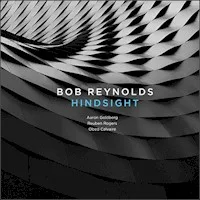Styles: Saxophone Jazz
Year: 2013
File: MP3@320K/s
Time: 59:25
Size: 137,1 MB
Art: Front
(5:23) 1. Creep
(5:30) 2. Feedback
(5:25) 3. The Beginning
(4:16) 4. Holocene
(5:18) 5. What She Didn't Say
(7:01) 6. Rise and Fall
(4:50) 7. A Love Story (In Three Cities)
(4:52) 8. Everlong
(5:55) 9. Phalanx
(5:31) 10. Closer
(5:19) 11. 622 (Bonus Track)
Year: 2013
File: MP3@320K/s
Time: 59:25
Size: 137,1 MB
Art: Front
(5:23) 1. Creep
(5:30) 2. Feedback
(5:25) 3. The Beginning
(4:16) 4. Holocene
(5:18) 5. What She Didn't Say
(7:01) 6. Rise and Fall
(4:50) 7. A Love Story (In Three Cities)
(4:52) 8. Everlong
(5:55) 9. Phalanx
(5:31) 10. Closer
(5:19) 11. 622 (Bonus Track)
As a saxophonist, Bob Reynolds has worked with a diverse array of artists in both pop (John Mayer, Michael Buble, Usher, Amos Lee, Jessica Simpson, Willie Nelson, Guy Sebastian) and jazz (Richard Bona, Tom Harrell, Brian Blade, Aaron Goldberg, Reuben Rogers, Eric Harland, Gregory Hutchinson). Reynolds is also an award-winning composer with 4 albums of original material and 4 ASCAP Young Jazz Composer Awards to his credit. He graduated with honors from Berklee College of Music and currently lives in Los Angeles.It's been nearly one year since we went into the studio to record this album. It's been nearly two years since I began talking with Matt Pierson (Joshua Redman, Brad Mehldau) about what this album would be.It's been even longer since I began jotting down configurations for who might play this music, what songs would go on this album, and what the overall concept would be. Longer still since some of these tunes were born.I knew it was going to be a great album; I got the best people for the job. I naively thought this might be the record that caught the attention of a Blue Note, Nonesuch or Concord Records.
Not because one needs a record label to release music these days. Anybody can put their music on iTunes. All my records are available online. But if you want to reach a wider audience, get promotion, tour effectively, and make more records, you need help. Or you need to be independently wealthy.I discovered jazz during the height of the young lion era. Wynton Marsalis paved the way in the '80s; Joshua Redman, Roy Hargrove and Christian McBride carried the torch in the 90's, and for awhile, every decent jazz musician in New York was putting out records for a label and touring.Those days are gone.But there's a big upside: I get to make whatever music I want with whomever I choose. You can't get dropped when you've never been picked up.My style doesn't fit neatly into a category like acoustic, straight-ahead, mainstream, contemporary or–God-forbid–smooth jazz, so it's a blessing I don't have to make music to please a particular record label.I don't have anyone telling me to make radio edits, use certain "marquee" players, what tunes to play, or that I'd sell more tickets/albums if I just wore leather pants and walked through the audience playing my sax high above my head.That is something to be grateful for.I'm also very grateful there are people in the world who dig my music. And thanks to technology, we're able to communicate directly.
I'm beyond grateful to find myself in such talented company. To have musical friends and compatriots who not only understand my vision, but bring such life, intensity, and personality to it. Does it take longer to produce and manufacture high-quality albums on your own? Yes. Will that prevent me from doing it? No. I only wish I could increase the pace of my output (hence the lament for a label [read: bank]). People love to talk about how "easy and cheap" making music is thanks to laptops, home recording software and the web, but the fact is it costs considerable sums to hire the best musicians, engineers and studios. You can buy tools and materials at Home Depot, but does that mean you should build your own house? Anyway, there's a track below in the YouTube media box we are all very excited about. I hope it makes you smile. http://www.jazzreview.com/jazz-spotlights/somewhere-in-between-by-bob-reynolds.html
Personnel: Bob Reynolds - tenor, soprano saxes; Eric Harland - drums; Janek Gwizdala - bass; Oli Rockberger - piano, keyboards; John Shannon - guitar; Bashiri Johnson - percussion with special guests John Mayer - guitar, lap steel guitar (2, 3)
Aaron Parks - piano (1, 3, 5)
Personnel: Bob Reynolds - tenor, soprano saxes; Eric Harland - drums; Janek Gwizdala - bass; Oli Rockberger - piano, keyboards; John Shannon - guitar; Bashiri Johnson - percussion with special guests John Mayer - guitar, lap steel guitar (2, 3)
Aaron Parks - piano (1, 3, 5)




